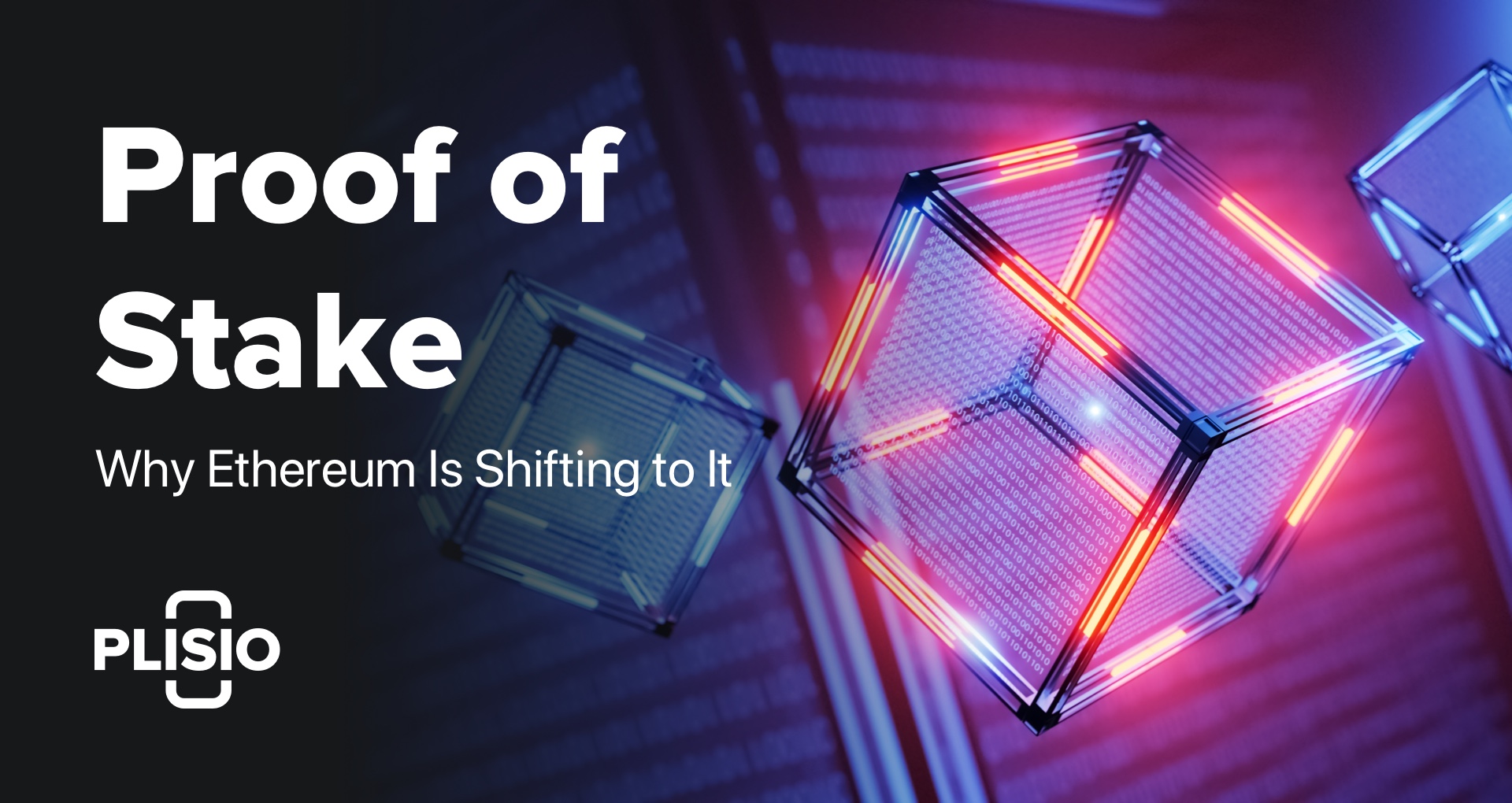What is Proof-of-Stake and Why Ethereum Is Shifting to It

Cutting-edge technologies come at a heavy price these days. The price is not only related to money, but also to energy, thus causing damage to the environment we’re so eager to preserve. Cryptocurrency mining is, without doubt, also an energy consuming business. However, it doesn’t have to be like that!
Ethereum has been moving towards switching from Proof-of-Work (PoW) to Proof-of-Stake (PoS) mining. These are consensus mechanisms different in the way they use computing power to generate new blocks. Proof-of-Work is a traditional way to mine cryptocurrency widely used by Bitcoin and Ethereum 1.0. Proof-of-Stake was designed to fix the network scalability problems and bring cryptocurrency to the new level of energy and time consumption. Today we will discuss the PoS advantages and learn why Ethereum will shift to it in the near future.
Even if Ethereum 2.0 shift has not happened yet, the classical version of Ethereum has its advantages. It is a decent cryptocurrency to hold your assets in or simply to use for business or online payments. Plisio payment gateway has taken care of the unreasonably high market fees, offering their clients only 0.5% fee for all transactions.
Proof-of-Work Consensus Mechanism
The older consensus mechanism, Proof-of-Work, was embedded into the Bitcoin architecture first. The other cryptocurrencies like Ethereum also duplicated it, but in time, this mechanism proved its imperfections. To perform complex calculations and to decrypt or process transactions, this consensus mechanism requires a lot of computing power - hardware, electricity, in its network. In PoW, to finish a transaction block, computers (miners who use the system) solve mathematical puzzles thus proving the legitimacy of ongoing transactions. Once a certain amount of transactions are processed, they are added to a block on the blockchain. For every completed block, miners are with a set amount of cryptocurrency such as Ethereum or Bitcoin.
Heavy power demand hits Ethereum scaling even harder. The Ethereum ecosystem operates on Smart contracts that only are being processed when specific criteria are met, hence increasing the power needed for the block to be processed. With more computing power required, gas prices come up. It looks bad for Ethereum when its gas price skyrockets to $20, while that of bitcoin doesn’t usually go higher than $2.
Proof-of-Stake Consensus Mechanism
While PoW miners use their hardware to generate tons of computing power to process transactions, PoS miners use their cryptocurrency. In Proof-of-Stake, so-called “validators” lock up their crypto assets to use it to process blocks. When a new block is added with help of the crypto locked up, the miner receives a fixed reward, just like in Proof-of-Work consensus mechanism. The whole process is called staking.
PoS is designed to reduce the excess energy consumption by delegating network control to the crypto owners. The mining power, in turn, is delegated according to the amount of crypto assets a miner holds. This new mining mechanism will clear the cryptocurrency mining name that is believed to cause the environment pollution.
- The Ethereum community see several advantages over PoW for Ethereum:
- No need for expensive hardware, thus making mining cheap and accessible to all
- The more people are involved in mining, the more nodes exist. This will make Ethereum more decentralized and therefore more secure
- Eco-friendly approach will partly delay the environmental degradation of our planet, which is good for the overall cryptocurrency image
The Ethereum network is in Phase 0 of its upgrade to Ethereum 2.0 now. The final launch is expected between 2022-2024. The switch to PoS consensus mechanism is scheduled due the second quarter of 2022.
While We Wait
Even if the launch of Ethereum 2.0 is not going to happen in the nearest time, we should point out that Ethereum is not the first cryptocurrency to use Proof-of-Stake consensus mechanism. Such cryptocurrencies as Tron, Dash Cardano, Cosmos or Polkadot are all operating on the PoS principle. If you haven’t tried PoS yet, it is a good chance to start with some of the already existing coins.
It is not necessary to buy it - you can always accept it for your business and services. Plisio has the best business-oriented features, among which are low fees, easy integrations and customized mass payout options. If you’re looking to preserve your assets during volatility and are not ready for staking, the best way for you is to accept stablecoins with the Plisio payment gateway while making up your mind about staking. It is never too late to alter your financial preferences and be smart about saving money.
